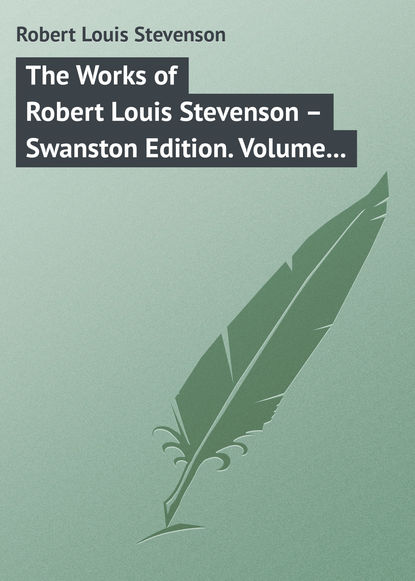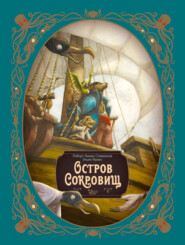По всем вопросам обращайтесь на: info@litportal.ru
(©) 2003-2024.
✖
The Works of Robert Louis Stevenson – Swanston Edition. Volume 16
Настройки чтения
Размер шрифта
Высота строк
Поля
Ibid. pp. 158, 299. – [R. L. S.]
5
Working farmer: Fr. laboureur.
6
This John Stevenson was not the only “witness” of the name; other Stevensons were actually killed during the persecutions, in the Glen of Trool, on Pentland, etc.; and it is very possible that the author’s own ancestor was one of the mounted party embodied by Muir of Caldwell, only a day too late for Pentland.
7
Wodrow Society’s “Select Biographies,” vol. ii. – [R. L. S.]
8
Though the districts here named are those in which the name of Stevenson is most common, it is in point of fact far more wide-spread than the text indicates, and occurs from Dumfries and Berwickshire to Aberdeen and Orkney.
9
Mr. J.H. Stevenson is satisfied that these speculations as to a possible Norse, Highland, or French origin are vain. All we know about the engineer family is that it was sprung from a stock of Westland Whigs settled in the latter part of the seventeenth century in the parish of Neilston, as mentioned at the beginning of the next chapter. It may be noted that the Ayrshire parish of Stevenson, the lands of which are said to have received the name in the twelfth century, lies within thirteen miles south-west of this place. The lands of Stevenson in Lanarkshire first mentioned in the next century, in the Ragman Roll, lie within twenty miles east.
10
This is only a probable hypothesis; I have tried to identify my father’s anecdote in my grandfather’s diary, and may very well have been deceived. – R. L. S.
11
This is, of course, the tradition commemorated by Southey in his ballad of “The Inchcape Bell.” Whether true or not, it points to the fact that from the infancy of Scottish navigation, the seafaring mind had been fully alive to the perils of this reef. Repeated attempts had been made to mark the place with beacons, but all efforts were unavailing (one such beacon having been carried away within eight days of its erection) until Robert Stevenson conceived and carried out the idea of the stone tower.
12
The particular event which concentrated Mr. Stevenson’s attention on the problem of the Bell Rock was the memorable gale of December 1799, when, among many other vessels, H.M.S. York, a seventy-four-gun ship, went down with all hands on board. Shortly after this disaster Mr. Stevenson made a careful survey, and prepared his models for a stone tower, the idea of which was at first received with pretty general scepticism. Smeaton’s Eddystone tower could not be cited as affording a parallel, for there the rock is not submerged even at high-water, while the problem of the Bell Rock was to build a tower of masonry on a sunken reef far distant from land, covered at every tide to a depth of twelve feet or more, and having thirty-two fathoms’ depth of water within a mile of its eastern edge.
13
The grounds for the rejection of the Bill by the House of Lords in 1802-3 had been that the extent of coast over which dues were proposed to be levied would be too great. Before going to Parliament again, the Board of Northern Lights, desiring to obtain support and corroboration for Mr. Stevenson’s views, consulted first Telford, who was unable to give the matter his attention, and then (on Stevenson’s suggestion) Rennie, who concurred in affirming the practicability of a stone tower, and supported the Bill when it came again before Parliament in 1806. Rennie was afterwards appointed by the Commissioners as advising engineer, whom Stevenson might consult in cases of emergency. It seems certain that the title of chief engineer had in this instance no more meaning than the above. Rennie, in point of fact, proposed certain modifications in Stevenson’s plans, which the latter did not accept; nevertheless Rennie continued to take a kindly interest in the work, and the two engineers remained in friendly correspondence during its progress. The official view taken by the Board as to the quarter in which lay both the merit and the responsibility of the work may be gathered from a minute of the Commissioners at their first meeting held after Stevenson died; in which they record their regret “at the death of this zealous, faithful, and able officer, to whom is due the honour of conceiving and executing the Bell Rock Lighthouse.” The matter is briefly summed up in the “Life” of Robert Stevenson by his son David Stevenson (A. & C. Black, 1878), and fully discussed, on the basis of official facts and figures, by the same writer in a letter to the Civil Engineers’ and Architects’ Journal, 1862.
14
“Nothing was said, but I was looked out of countenance,” he says in a letter.
15
Ill-formed – ugly. – [R. L. S.]
16
This is an incurable illusion of my grandfather’s; he always writes “distended” for “extended.” [R. L. S.]
17
Wild cherries.
18
Milton.
19
Milton.
20
Milton.
21
As pvf will continue to haunt us through our English examples, take, by way of comparison, this Latin verse, of which it forms a chief adornment, and do not hold me answerable for the all too Roman freedom of the sense: “Hanc volo, quæ facilis, quæ palliolata vagatur.”
22
Coleridge.
23
Antony and Cleopatra.
24
Cymbeline.
25
The v is in “of.”
26
Troilus and Cressida.
27
Mr. James Payn.
28
A footnote, at least, is due to the admirable example set before all young writers in the width of literary sympathy displayed by Mr. Swinburne. He runs forth to welcome merit, whether in Dickens or Trollope, whether in Villon, Milton, or Pope. This is, in criticism, the attitude we should all seek to preserve, not only in that, but in every branch of literary work.
29
5
Working farmer: Fr. laboureur.
6
This John Stevenson was not the only “witness” of the name; other Stevensons were actually killed during the persecutions, in the Glen of Trool, on Pentland, etc.; and it is very possible that the author’s own ancestor was one of the mounted party embodied by Muir of Caldwell, only a day too late for Pentland.
7
Wodrow Society’s “Select Biographies,” vol. ii. – [R. L. S.]
8
Though the districts here named are those in which the name of Stevenson is most common, it is in point of fact far more wide-spread than the text indicates, and occurs from Dumfries and Berwickshire to Aberdeen and Orkney.
9
Mr. J.H. Stevenson is satisfied that these speculations as to a possible Norse, Highland, or French origin are vain. All we know about the engineer family is that it was sprung from a stock of Westland Whigs settled in the latter part of the seventeenth century in the parish of Neilston, as mentioned at the beginning of the next chapter. It may be noted that the Ayrshire parish of Stevenson, the lands of which are said to have received the name in the twelfth century, lies within thirteen miles south-west of this place. The lands of Stevenson in Lanarkshire first mentioned in the next century, in the Ragman Roll, lie within twenty miles east.
10
This is only a probable hypothesis; I have tried to identify my father’s anecdote in my grandfather’s diary, and may very well have been deceived. – R. L. S.
11
This is, of course, the tradition commemorated by Southey in his ballad of “The Inchcape Bell.” Whether true or not, it points to the fact that from the infancy of Scottish navigation, the seafaring mind had been fully alive to the perils of this reef. Repeated attempts had been made to mark the place with beacons, but all efforts were unavailing (one such beacon having been carried away within eight days of its erection) until Robert Stevenson conceived and carried out the idea of the stone tower.
12
The particular event which concentrated Mr. Stevenson’s attention on the problem of the Bell Rock was the memorable gale of December 1799, when, among many other vessels, H.M.S. York, a seventy-four-gun ship, went down with all hands on board. Shortly after this disaster Mr. Stevenson made a careful survey, and prepared his models for a stone tower, the idea of which was at first received with pretty general scepticism. Smeaton’s Eddystone tower could not be cited as affording a parallel, for there the rock is not submerged even at high-water, while the problem of the Bell Rock was to build a tower of masonry on a sunken reef far distant from land, covered at every tide to a depth of twelve feet or more, and having thirty-two fathoms’ depth of water within a mile of its eastern edge.
13
The grounds for the rejection of the Bill by the House of Lords in 1802-3 had been that the extent of coast over which dues were proposed to be levied would be too great. Before going to Parliament again, the Board of Northern Lights, desiring to obtain support and corroboration for Mr. Stevenson’s views, consulted first Telford, who was unable to give the matter his attention, and then (on Stevenson’s suggestion) Rennie, who concurred in affirming the practicability of a stone tower, and supported the Bill when it came again before Parliament in 1806. Rennie was afterwards appointed by the Commissioners as advising engineer, whom Stevenson might consult in cases of emergency. It seems certain that the title of chief engineer had in this instance no more meaning than the above. Rennie, in point of fact, proposed certain modifications in Stevenson’s plans, which the latter did not accept; nevertheless Rennie continued to take a kindly interest in the work, and the two engineers remained in friendly correspondence during its progress. The official view taken by the Board as to the quarter in which lay both the merit and the responsibility of the work may be gathered from a minute of the Commissioners at their first meeting held after Stevenson died; in which they record their regret “at the death of this zealous, faithful, and able officer, to whom is due the honour of conceiving and executing the Bell Rock Lighthouse.” The matter is briefly summed up in the “Life” of Robert Stevenson by his son David Stevenson (A. & C. Black, 1878), and fully discussed, on the basis of official facts and figures, by the same writer in a letter to the Civil Engineers’ and Architects’ Journal, 1862.
14
“Nothing was said, but I was looked out of countenance,” he says in a letter.
15
Ill-formed – ugly. – [R. L. S.]
16
This is an incurable illusion of my grandfather’s; he always writes “distended” for “extended.” [R. L. S.]
17
Wild cherries.
18
Milton.
19
Milton.
20
Milton.
21
As pvf will continue to haunt us through our English examples, take, by way of comparison, this Latin verse, of which it forms a chief adornment, and do not hold me answerable for the all too Roman freedom of the sense: “Hanc volo, quæ facilis, quæ palliolata vagatur.”
22
Coleridge.
23
Antony and Cleopatra.
24
Cymbeline.
25
The v is in “of.”
26
Troilus and Cressida.
27
Mr. James Payn.
28
A footnote, at least, is due to the admirable example set before all young writers in the width of literary sympathy displayed by Mr. Swinburne. He runs forth to welcome merit, whether in Dickens or Trollope, whether in Villon, Milton, or Pope. This is, in criticism, the attitude we should all seek to preserve, not only in that, but in every branch of literary work.
29

















